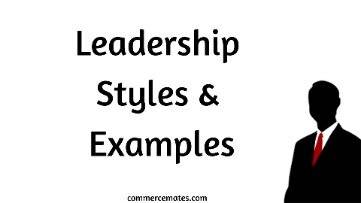How to Hire Employees: Simplify Your Hiring Process in 11 Steps
Content
She joined CareerPlug in 2021 as the HR Manager on the People Team. Tulay has worked in the public sector as the Director of HR/Safety and private sector as an HR Manager for the oldest home improvement retailer in the US. Tulay is particularly experienced in the business of HR administration and employee wellness with a passion for connecting with people and employee development. Growing up in southern Wisconsin, Natalie attended Emerson College in Boston. After moving to Austin in 2014, they joined the CareerPlug team to work in sales and marketing. As the company grew their role evolved into internal communications and eventually human resources.
How do you hire employees?
- Determine the type of positions needed.
- Define job roles and responsibilities.
- Find candidates.
- Conduct interviews.
- Select a candidate.
- Onboard the new employee.
Internal How To Hire Employees In 7 Stepss could be the best bet for promotions within departments or staff moves that benefit the managers, teams, or the employee themself. A great job description delivers all the information your candidates need to know and all the requirements you desire. Meet regularly with employees to see how it’s going and to get their feedback on what they would like more of. Identify what obstacles make it hard to follow through, like not enough hours in the workday or interruptions. Identify ways to make their training time available, easier, and more effective. You’ve spent ample time coming up with an employee development plan.
Sort Applications Like a Boss
Hirers can use assessments to gather different kinds of information, from personal to professional. This data can help to determine role readiness, cultural fit, and level of expertise. Sifting out those who fail to meet minimum requirements and ranking your best qualifiers can help you segment your candidates to narrow down your choices.
These posters are available for free electronically, or you can purchase them from third-party providers. This is also an excellent time to set up any employee benefits you’ve offered. Make sure your post includes a statement identifying you as an Equal Opportunity Employer. Also, consider using blind recruitment, where your applicants’ names, education, and years of experience are hidden to overcome unconscious bias.
Recruitment Process Steps HR Professionals Should Follow for the Best Results
To prepare, create a list of questions that ask candidates to provide examples. If you need a bit of help crafting the best questions, download our guide that will help you go beyond a candidate’s résumé during the interview to reveal their true potential. As for what you need to prep for, know how you’re going to sell yourself and the company.
- She spends her free time raising her 2 dogs, playing cornhole, and perfecting the art of charcuterie.
- Kate also works with employers to identify problems in hiring processes, offering full support and advice throughout the recruitment cycle.
- Stick to the job requirements and the candidate’s work experience.
- Focus on what your company can do for potential employees, and you’ll attract candidates who better fit your needs.
- A bad process could be devastating for your employer brand in the long run.
This way, they will get time to pay attention to more important tasks in the recruitment process. Also, In this blog, we have covered the meaning, strategies, and steps for recruiters to conduct an effective and efficient recruitment process. A recruitment process, which is frustrating and drawn-out, will almost certainly lose you good Candidates from the process, regardless of how amazing the role may seem. A process that is clear and easily understood by all involved, reflecting your brand, will help you attract the people you want and keep them engaged throughout. Once you’ve taken everything you learned in the selection process into account, from your own candidate evaluation to background and reference checks, you’re ready to make your hiring decision. You’re now deep in the selection process, having screened candidates, evaluated their skills, assessed their abilities, and created a shortlist of the most qualified people.
Interviewing the most qualified candidates
Communication styles each potential hire might bring to your team. Often, a candidate will want to negotiate some terms of the offer letter. This is perfectly normal, and you should be prepared for it to happen. However you manage the process, interviewing should be regulated to make questioning equal and easily monitored and scored. Keep up to date on learning industry news and the latest EdgePoint offerings. Contact from a Cella employee will always come from the domain @cellainc.com and will always provide a phone number where you can contact us.
The candidate experience you create can also have consequences for your employer brand. 37% of candidates said they’ve left a negative review online after having a negative experience in the hiring process. However, 61% of candidates said they’ve left a positive review online after having a positive experience. For job seekers, choosing to work for a company with a great reputation is a no-brainer, while choosing to work for a company with a less-than-great reputation can give them pause. An ideal candidate profile can serve as your blueprint for the kinds of skills, talents, and behaviors someone needs to succeed in your open role. You can use it to guide everything from your job posting to the kinds of questions you ask in your interviews.


